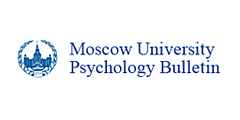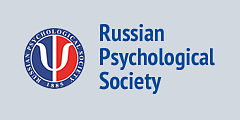
South Ural State University,
Chelyabinsk, Russia
-
Elusive Sources for Gender Differences in Spatial Ability: The Role of Personality, Spatial Interests, and Everyday BehavioursPDF HTML4042“ CITE
Tsigeman, E.S., Bartseva, K.V., Alenina, E.A., Soldatova, E.L., Kovas, Yu.V., Likhanov, M.V. (2025). Elusive Sources for Gender Differences in Spatial Ability: The Role of Personality, Spatial Interests, and Everyday Behaviours, Psychology in Russia: State of the Art, 18(1), 35–59. DOI: 10.11621/pir.2025.0103
copied
-
Background. After decades of research, gender differences in spatial abilities (SA) remain poorly understood. Among factors that may contribute to these differences are self-perceived SA, inclinations, everyday behaviour and interests in SA-related activities, and related personality characteristics. In order to understand these links, a multifactorial approach is needed.
Objective. This study explored the relationships among SA, spatial interests, and personality among adolescent boys and girls.
Design. The study recruited 660 participants (mean age = 15.04, SD = 1.08; 48% females) from public schools. Participants contributed data on a battery of SA tests; 8 personality traits: Big Five and Dark Triad; as well as SA-related activities: spatial interests and school commute information (mode and time) as a proxy for everyday spatial behaviour.
Results. Weak-to-moderate mean gender differences were observed: males scored higher on spatial ability, spatial interests, machiavellianism, and psychopathy; and females on agreeableness, openness to experience, and neuroticism. Hierarchical regression analyses revealed some gender differences in associations among personality traits and SA. In males, openness to experience and conscientiousness were significantly related to SA test performance. In females, openness to experience, extraversion, agreeableness, and machiavellianism contributed to SA performance. Although spatially-related interests were linked to SA, they were not significantly predicted by personality traits. Everyday spatial behaviour showed no relationship with personality traits or SA.
Conclusion. The study replicated patterns of gender differences in spatial ability, spatial interests, and personality reported in previous literature. The results showed differential links between personality traits and spatial ability for males and females. However, the overall amount of variance explained in spatial ability was very small, suggesting that other factors are more prominent sources of gender differences in spatial ability.
DOI: 10.11621/pir.2025.0103
Keywords: Big Five/ personality/ Dark Triad/ spatial ability/ spatial interest
-
-
The Factorial Structure of Spatial Abilities in Russian and Chinese StudentsLikhanov, M.V.; Ismatullina, V.I.; Rimfeld, K.; Esipenko, E.A.; Sharafieva, K.R.; Feklicheva, I.V.; Chipeeva, N.A.; Budakova, A.V.; Soldatova, E.L.; Maslennikova, E.P.; Fenin, A.Y.; Wei, Wei.; Zhou, X.; Kovas, Yu.V.
-
Background. Recent research has suggested a unifactorial structure of spatial ability (SA). However, further studies are needed to replicate this finding in different populations.
Objective. is study aims to explore the factorial structure of SA in samples of 921 Russian and 229 Chinese university students.
Design. A gamified spatial abilities battery was administered to all participants. e battery consists of 10 different domains of SA, including 2D and 3D visualization, mental rotation, spatial pattern assembly, spatial relations, spatial planning, mechanical reasoning, spatial orientation, and spatial decision-making speed and flexibility.
Results. The results of the factor analysis showed a somewhat different pattern for different samples. In the Russian sample, the unifactorial structure, shown previously in a large UK sample (Rimfeld et al., 2017), was replicated. A single factor explained 40% of the variance. In the Chinese sample two factors emerged: the first factor explained 26% of the variance and the second factor, including only mechanical reasoning and cross-sections tests, explained 14%. e results also showed that the Chinese sample significantly outperformed the Russian sample in five out of the 10 tests. Russian students showed better performance in only two of the tests. The effects of all group comparisons were small.
Conclusion. Overall, a similar amount of variance in the 10 tests was explained in the two samples, replicating results from the UK sample. Future research is needed to explain the observed differences in the structure of SA.
DOI: 10.11621/pir.2018.0407
Keywords: spatial ability (SA), factorial structure, Russian and Chinese students
-
-
Comparing Spatial Ability of Male and Female Students Completing Humanities vs. Technical DegreesEsipenko, E.A.; Maslennikova, E.P.; Budakova, A.V.; Sharafieva, K.R.; Ismatullina, V.I.; Feklicheva, I.V.; Chipeeva, N.A.; Soldatova, E.L.; Borodaeva, Zh. E.; Rimfeld, K.; Shakeshaft, N.G.; Malanchini M.; Malykh, S. B.
-
Background. Spatial ability (SA) has long been the focus of research in psychology, because it is associated with performance in science, technologies, engineering, and mathematics (STEM). Research has shown that males consistently outperform females in most aspects of SA, which may partially explain the observed overrepresentation of male students seeking STEM degrees.
Objective. This study examines sex and field of study (degree) differences in different aspects of spatial ability and its structure.
Design. We assessed SA by using an on-line gamified battery, which included 10 spatial tests capturing 10 dimensions of spatial ability, among which were mental rotation, spatial visualization, spatial scanning, spatial reasoning, perspective-taking, and mechanical reasoning. The sample consisted of 882 STEM (55% males) and Humanities (20% males) university students in Russia.
Results. Males outperformed females on all assessed components of SA with a small effect size (1–11%). We also found that students from STEM fields outperformed Humanities students on all SA subtests (effect size ranged from 0.2 to 7%). These differences by study choice were not fully explained by the observed over-representation of males in the STEM group. The results of the study suggested no interaction between sex and degree. In other words, on average, males outperformed females, irrespective of whether they were STEM or humanities students; and the STEM advantage was observed for both males and females. The same unifactorial structure of SA was observed in the STEM and Humanities groups.
Conclusion. Our results are consistent with previous research, suggesting sex and study field differences in SA. Longitudinal research is needed to explore the causal mechanisms underscoring these differences.
DOI: 10.11621/pir.2018.0403
Keywords: Spatial ability (SA), degree (field of study), gender differences, individual differences, STEM
-









